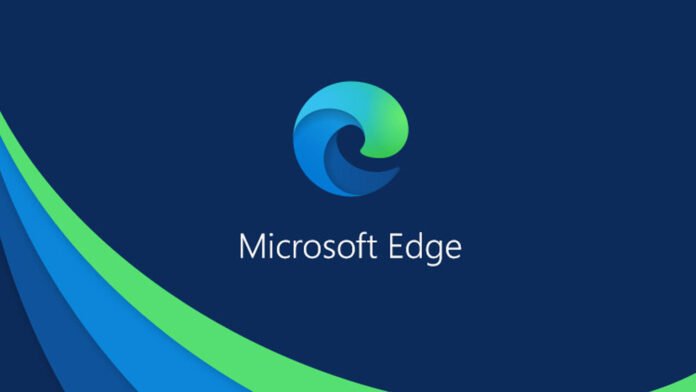Selenium testing is important in this world of web development because it’s a must that each web page works perfectly in each of the up-to-date web browsers. This is where Selenium comes into play. Being a WebDriver, it automates web browsers, meaning it can run tests across different platforms and browsers without untimely manual effort. This role in the process of quality assurance cannot be undermined, for this brings about the smooth running of the applications for each and every user, irrelevant to the browser they may have decided to use.
The current year has placed Microsoft Edge significantly in the market of browsers. Using the engine of Chromium, Edge can finally be in a much better position to fit all the standards, while many more users will, based on their needs, find it suitable for them. Always make sure, together with each top player’s market change, the QA team is also testing with Microsoft Edge. However, testing on Edge requires specialized techniques to address its unique behaviors and features. And even more expertise when you are testing on Microsoft Edge online.
Getting Started with Selenium and Microsoft Edge
Selenium WebDriver is a powerful tool for automating web browsers, and it works well with Microsoft Edge. The compatibility between Selenium and Microsoft Edge means that tests can run smoothly, simulating real-user interactions on the Edge browser.
To get started, you’ll need to set up Selenium for testing with Microsoft Edge. Here’s a simple step-by-step guide:
- Install Selenium WebDriver: Make sure you have the Selenium WebDriver installed in your development environment. This tool is essential for automating your browser interactions.
- Download the Edge Driver: You’ll need the Microsoft Edge Driver, which is specific to the version of Edge you’re testing on. Make sure the driver version matches your browser’s version for compatibility.
- Configure Your Test Environment: Include the Edge Driver in your test project, and configure Selenium to use it. This involves setting up your test scripts to recognize the Edge browser and execute tests on it.
- Write and Run Your Tests: With everything set up, you can start writing your Selenium tests. Run them to see how your web application performs on Microsoft Edge.
Common pitfalls include not matching the Edge Driver version with the browser version and ignoring Edge-specific behaviors that might affect your tests. Paying attention to these details can save you time and ensure your tests are accurate.
Advanced Selenium Testing Techniques
As you become more comfortable with Selenium and Microsoft Edge, you can implement advanced testing techniques to enhance your test coverage and efficiency.
Dynamic Element Handling: Web pages often have elements that load dynamically. Use Selenium’s wait functions to handle these elements. This ensures your tests wait for the elements to appear before interacting with them.
Page Object Model (POM): This design pattern helps maintain your code and makes your test scripts readable. You create objects for each application development page, avoiding code duplicity, thus making it maintainable.
Browser Tabs and Windows Handling: Just like most other browsers, Microsoft Edge opens more than one tab or window. Selenium provides a way to switch between these browser tabs or windows and thus be able to test the scenarios you are doing in real-time by interaction across different browser tabs or windows.
Asynchronous Testing: Today, most of the web applications are going with dynamic content loading using AJAX. Use explicit and implicit waits of Selenium to manage this kind of action and let your test continue only after the complete loading of elements required.
Cross-Browser Testing Strategies: While your emphasis may be on Microsoft Edge, it is very necessary to test across all major browsers to ensure consistency. You should develop the strategy to consist of testing on different browsers using tools like LambdaTest to manage these tests.
Leveraging LambdaTest for Microsoft Edge Testing
Introduction to LambdaTest: LambdaTest is a cloud-based platform that allows you to perform automated cross browser testing. It supports many browsers and operating systems, including Microsoft Edge, making it an invaluable tool for QA teams.
Why LambdaTest for Microsoft Edge: LambdaTest offers several advantages for testing on Microsoft Edge. It provides access to various versions of Edge and different operating system combinations. This is crucial for ensuring your web application works well across all possible user environments. Additionally, LambdaTest integrates with CI/CD pipelines, streamlining the testing process and enabling continuous testing.
LambdaTest Features: Among its many features, LambdaTest offers parallel testing, allowing you to run multiple tests simultaneously across different browser and OS combinations. This significantly reduces the time needed for comprehensive testing. The Selenium Grid on LambdaTest enables you to execute Selenium scripts in the cloud, further enhancing testing efficiency. Real-time debugging tools are also available, providing immediate feedback and speeding up the debugging process.
Real-world Example: Imagine you’re testing an e-commerce website. Using LambdaTest, you can simultaneously run tests on Microsoft Edge across different versions and operating systems to ensure that every user, regardless of their browser or device, has a seamless shopping experience. This not only saves time but also ensures that your website is robust and reliable across all platforms.
By following these guidelines and leveraging tools like LambdaTest, you can ensure that your web applications perform well on Microsoft Edge and other browsers, providing a seamless user experience for everyone.
Best Practices for Efficient Selenium Tests
Let’s dive into best practices now.
Test Organization
Organizing your Selenium tests is crucial for maintenance and understandability. Start by grouping tests logically, such as by application feature or user journey. Use clear, descriptive names for test methods and classes to indicate what each test covers. Implementing the Page Object Model (POM) can drastically improve your test structure by separating the UI structure from test logic, making your tests easier to read and maintain.
Optimizing Test Execution
Speeding up Selenium test execution can significantly enhance your testing cycle. One effective method is parallel testing, where multiple tests run simultaneously across different environments. This approach reduces the overall time needed for test execution. Another technique is selective testing, where only tests relevant to recent changes in the application are run. This can be achieved by tagging tests and executing them based on the areas of the application that have been modified.
Debugging and Troubleshooting
Common issues in Selenium testing with Microsoft Edge include synchronization problems, where tests attempt to interact with elements before they’re ready. Using explicit waits can solve this by waiting for certain conditions before proceeding. Compatibility issues between the WebDriver and browser versions can also arise; ensure they are always aligned. When encountering errors, use Selenium’s screenshot and logging capabilities to capture the state of the application at the time of failure, aiding in troubleshooting.
Future Trends in Selenium Testing for Microsoft Edge
Thus, horizons in the Selenium Testing field, particularly those covering browsers like Microsoft Edge, are widening towards smarter, more automatic solutions. That is where Artificial Intelligence (AI) and Machine Learning (ML) added to the testing automation would make all the difference. These technologies are poised to revolutionize how tests are conducted, analyzed, and optimized.
AI and Machine Learning in Selenium Testing
AI and ML can dramatically enhance the capability to identify recurring patterns in test failures. This identification process can lead to more precise debugging, allowing developers and testers to pinpoint the root causes of issues much more rapidly than traditional methods. Furthermore, these technologies could suggest optimizations by analyzing test performance data, identifying bottlenecks, and recommending changes to improve efficiency and effectiveness.
The potential of AI and ML extends to the generation and maintenance of test scripts. In the case of having enough training data, an AI model can be well-trained to synthesize the usual interactions a user might have with a web application and thereafter generate test scripts. This accelerates not only the initial test creation process but also means that your tests will adapt to changes in the application UI or functionality with minimal manual effort to bring the tests up to date.
Integration with CI/CD
Selenium testing gets integrated into Continuous Integration (CI) and Continuous Deployment (CD) pipelines ever so smoothly. Under a CI/CD environment, each code commit would automatically build, test, and prepare for release; hence, the testing is continuous in this case and fundamental in nature. Selenium tests can be automated, especially when reinforced with an AI and ML capability in these pipelines. This ensures that any regressions or issues are caught early in the development cycle, facilitating faster and more reliable releases.
The future of CI/CD also points towards more sophisticated orchestration of Selenium tests, where tests are intelligently selected and run based on the context of the changes made in the codebase. This smart selection process minimizes testing time while maximizing coverage, ensuring that the most relevant tests are always executed in relation to the code changes.
Staying Updated
The landscape of web development and testing is continuously evolving, with browsers like Microsoft Edge and tools like Selenium leading the charge towards more advanced capabilities and better user experiences. Staying updated with the latest releases of Selenium and Microsoft Edge is crucial for taking full advantage of these advancements. New versions may include improved support for modern web technologies, enhanced performance, and additional features that can simplify and strengthen testing efforts.
Moreover, the Selenium community is vibrant and innovative, often quick to adopt and implement new technologies and methodologies. Engaging with this community, through forums, social media, and conferences, can provide valuable insights and keep testers abreast of the latest trends and best practices in Selenium testing.
Conclusion
The advanced Selenium testing techniques for Microsoft Edge Online are indispensable for ensuring that web applications perform seamlessly across all browsers. It is a given that with growing market shares for Microsoft Edge, it becomes crucial to use such specialized testing techniques/practices for their wider catchment. It is in such kind of ecosystem that platforms like LambdaTest come in handy. They avail the tools and the environments that are incumbent for scrupulous and effective testing. Their features, with parallel testing and real-time debugging, will come in handy for the QA Team that looks forward to an optimized process.
The testing landscape changes, and adapting to those changes will be tantamount to remaining change-adaptive. As new technologies and methodologies in testing become integrated, it will pose many challenges, but for sure, in the same way, it will bring opportunities for innovation and improvement. What they do say is that with LambdaTest and Selenium, their application does deliver the invincible, flawless user experiences in each and every browser, including Microsoft Edge. For more insights on the latest testing tools and strategies, explore RedGIF.



